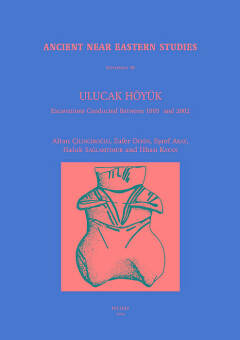
- Afhalen na 1 uur in een winkel met voorraad
- Gratis thuislevering in België vanaf € 30
- Ruim aanbod met 7 miljoen producten
- Afhalen na 1 uur in een winkel met voorraad
- Gratis thuislevering in België vanaf € 30
- Ruim aanbod met 7 miljoen producten
Zoeken
Ulucak Hoyuk
Excavations Conducted Between 1995 and 2002
A Cilingiroglu, Z Derin, H Saglamtimur, E Abay, I Kayan
€ 120,95
+ 241 punten
Omschrijving
Of the areas in Anatolia that have attested intensive Neolithic occupation, the western region is the least understood, with systematic investigations barely two decades old. Information concerning the west-central sector around Izmir is particularly limited and underlines the significance of the results from Ulucak, an ancient mound site, and the first Neolithic site to be excavated in this part of Anatolia. The Neolithic settlement is superimposed by the debris of three other main cultural periods, providing an important sequence for the Izmir region. From top to bottom the periods are: Late Roman - Early Byzantine (Period I), Early Bronze Age II (Period II), Late Chalcolithic Age (Period III) and Late Neolithic (Period IV). Of these the Late Neolithic settlement is the most significant, attesting to influences from the Aegean, the Balkans and the Konya Plain. This volume presents the results to date of this multi-disciplinary project, ranging from palaeogeography, through stratigraphy and settlement plans to an analysis of the finds, focusing especially on the Late Neolithic.
Specificaties
Betrokkenen
- Auteur(s):
- Uitgeverij:
Inhoud
- Aantal bladzijden:
- 162
- Taal:
- Engels
- Reeks:
- Reeksnummer:
- nr. 15
Eigenschappen
- Productcode (EAN):
- 9789042913912
- Verschijningsdatum:
- 9/11/2004
- Uitvoering:
- Paperback
- Formaat:
- Trade paperback (VS)
- Afmetingen:
- 213 mm x 297 mm
- Gewicht:
- 680 g

Alleen bij Standaard Boekhandel
+ 241 punten op je klantenkaart van Standaard Boekhandel
Beoordelingen
We publiceren alleen reviews die voldoen aan de voorwaarden voor reviews. Bekijk onze voorwaarden voor reviews.








